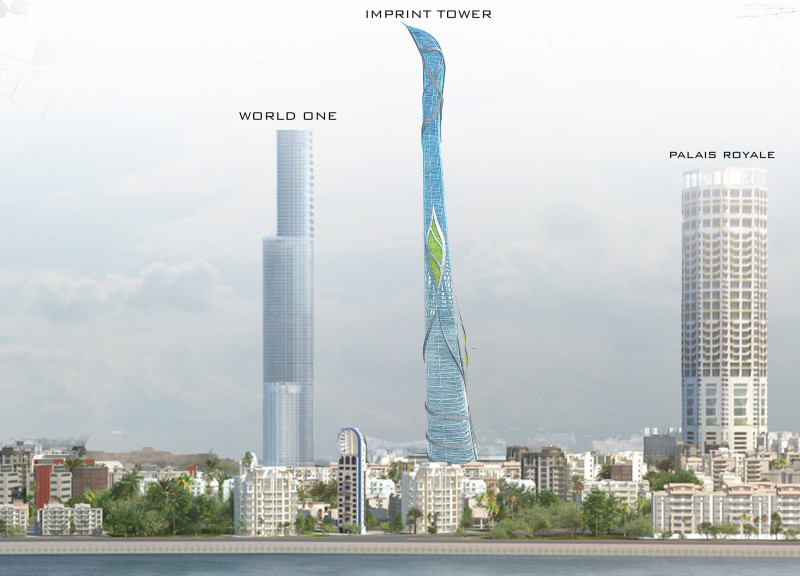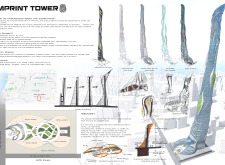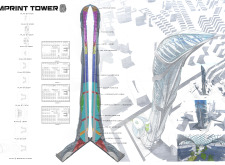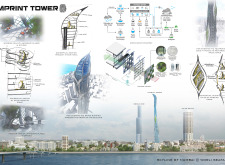5 key facts about this project
## Analytical Report on the Imprint Tower Architectural Design Project
### Project Overview
The Imprint Tower is designed to integrate office, retail, and residential functions within an urban context in Worli, Mumbai. This location is characterized by its juxtaposition of modern and traditional elements, serving as a key area in the economic landscape of India. The design addresses urban challenges while considering the site’s historical and cultural contexts, aiming to create a cohesive environment that meets the needs of contemporary users.
### Conceptual Framework
The design philosophy centers on human-centric principles, drawing inspiration from the concept of the human footprint. This concept manifests in forms that symbolize stability and connection to the earth. The Imprint Tower’s adaptable spaces reflect a commitment to flexibility, allowing for various uses that can transition with the evolving demands of urban life. The building layout incorporates mixed-use functionality, placing retail spaces on the ground level while reserving upper floors for office and residential activities, ultimately fostering a live-work-play environment.
### Architectural Elements and Materiality
The tower stands out with its slender, twisting silhouette that not only enhances its presence in the skyline but also optimizes structural integrity against wind forces. The façade primarily features glass to promote transparency and panoramic views, while minimizing energy consumption through passive solar strategies. A steel framework ensures strength, paired with concrete for durability in the podium and core. Additionally, the design incorporates vertical gardens and aquaponics systems, which contribute to sustainability by promoting biodiversity and efficient resource usage. Advanced water management strategies, including systems for rainwater harvesting and greywater recycling, are integral to the building's commitment to environmental stewardship. The blend of different materials and features supports an atmosphere that encourages social interaction, enhancing community engagement through public and landscaped spaces.





















































